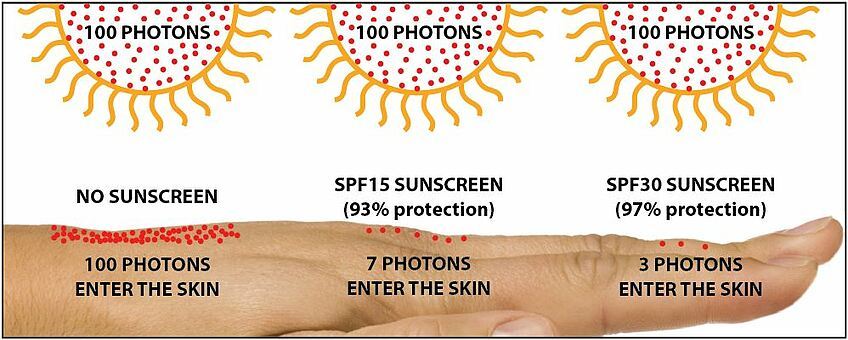Do Employers Have to Provide Sun Cream?
Most people know about the dangers of skin cancer and sunburn. But when your employees work outside in the summer, how can they protect themselves from these dangers? One of the easiest and most logical answers is sun cream.
Is it your responsibility to provide your workers with sunscreen as an employer?
The Ugly Truth About Suntans
In 2016, almost 2,300 people died from skin cancer. 86% of those cases are thought to be preventable. Although many people love having a suntan, there is a fine line between tan and burn. For people who do not live in a warm environment, even a suntan means the outer layers of skin have been damage.
A suntan is the body’s natural defence mechanism to protect itself from damaging ultraviolet rays. When this natural defence is overwhelmed, a toxic reaction results in a sunburn.
Does Sun Cream Prevent Cancer?
Sun cream can help protect the body from some types of skin cancer. Depending on the SPF (sun protection factor), sun cream protects the skin from UVA and UVB rays for a prescribed period of time.
This is important when working outside in the sun. Sun Protection factors measure how well the sun cream protects the skin from radiation that causes sunburn, damage, and contributes to skin cancer.
For example, your skin burns after 10 minutes of exposure to the sun. You then apply SPF 15, this would allow you to stay in the sun without burning for 150 minutes. A factor of 15 times longer than your normal burn time. It is a rough time estimate based on skin type, the sun’s intensity, and the amount of sun cream you use.
Always use a minimum of SPF 15 and apply the proper amount, reapplying every two hours. You need 2 milligrams per centimetre square of skin (an ounce for full body coverage). Many people under apply their sun cream, which only protects the skin by the square root of the SPF. This means half an application of SPF 30 will protect the skin only 5.5 times your burn factor (SPF 5.5).
Moderate sun tanning without burning can prevent any subsequent burns (but this line can be dangerous if crossed). As melanin protects the skin against overexposure, the skin tans. Sunburn can trigger direct DNA damage, which can trigger type I cell death and the skin is replaced, but the DNA damage can cause faulty replication later (which is cancer).
Sun cream is your best chance against the harmful rays whilst working, along with PPE, polarised safety specs, and hats.
Do Employers Need to Provide Sunscreen?
The short answer is no, there is no legal obligation to provide sun cream for your workers. However, The PPE at Work Regulation of 1992 notes that employees must be provided with suitable PPE for work conditions. This means work conditions and weather need to be taken into account.
Even though you do not need to provide sun cream, it is advised that you provide advice and training. If your workers do not manage their own PPE responsibilities, all you can do is reinforce the importance of their protective equipment and sun cream.
Figurative red tape prevents many employers from providing sun cream. What if it reacts with some people’s skin type? What if this cream is provided and workers still get burned (because they put themselves at risk) will they blame me?
If you do want to provide added protection, you may provide free sun cream, but ensure you disclaim against absolute protection.
You will need a disclaimer stating that you are not liable for employee misuse such as not applying enough sun cream or not applying every two hours. This is assuming you have put other safety factors in place - options for drinking water, shady spots, limiting exposure, appropriate clothing, and so forth.
SPF Breakdown
Most people think that if they load up on factor 50, they will load up on the protection, but that is not the case. Sun protection factor is a scale and not a linear measure.
- SPF 15 blocks 93% of UVB rays
- SPF 30 blocks 97% of UVB rays
- SPF 50 blocks 98% of UVB rays
- SPF 30 only blocks half of the radiation of SPF 15, so you are not doubling your protection by slapping on a higher SPF. Higher protection sunscreen like factors 75 and 100 only provide more UVA protection and do not provide a significant increase in UVB protection.

Conclusion
You need to provide appropriate protective clothing, headwear, and eyewear for your workers. Also, limit their exposure to the sun by scheduling work when the sun is not at its hottest.
This is usually from 10am to 4pm. Know that external weather factors also affect the sun’s rays. Such as cloud cover, proximity to water, sand, reflective surfaces, concrete, snow, and ice. Altitude and latitude also play a factor.
Allow your workers to take frequent breaks that are in shady spots and provide adequate water since the sun can not only burn your workers but cause fatigue.
- Why Embroidery Looks Better on Polos Than T-Shirts – And What That Means for Your Brand - 29th December 2025
- 6 Visual Cues That Shape Workplace Culture - 23rd September 2025
- How to Roll Out a Workplace Uniform Policy - 23rd September 2025
